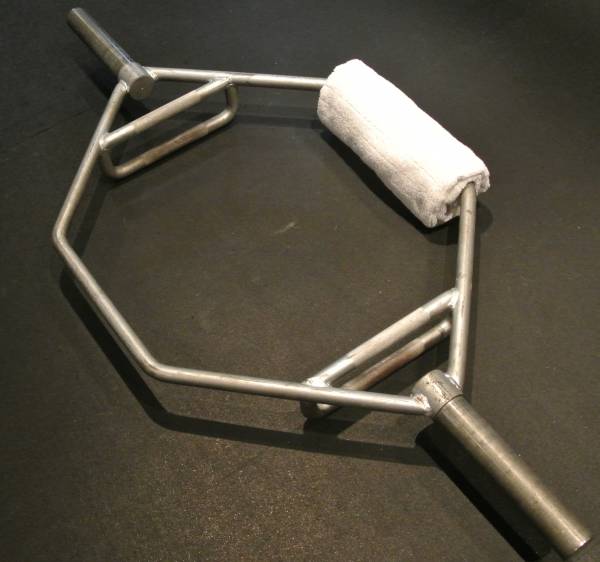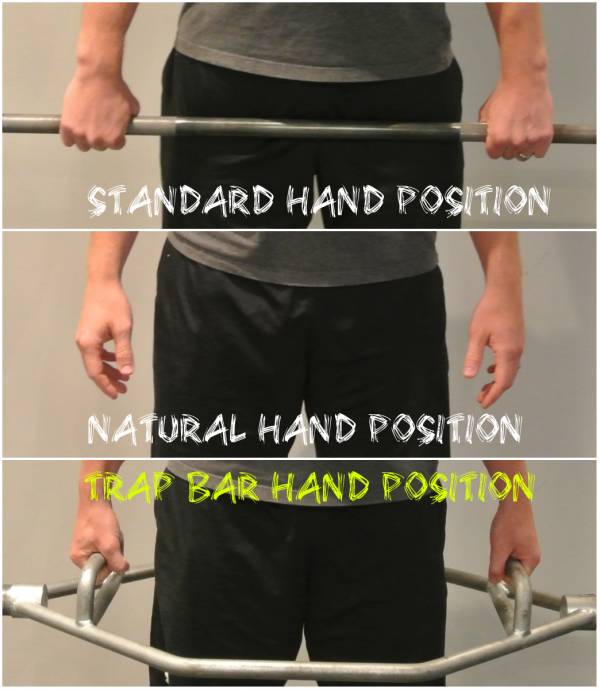Most personal trainers would agree that the trap or hex bar is an essential piece of gym equipment. Mainly because it’s the perfect regression exercise for the traditional barbell deadlift.
Based on comfort and favorable execution, some may even argue the trap bar is preferred. Not only because long legs and short arms are removed as obstacles, but the unique design of the bar facilitates an upright body position that limits the potential for injury.
Even though the trap bar deadlift has always served as a staple in my programming, I never explored alternative options until recently. Sure, I’ve done my fair share of trap bar shrugs and jump squats, but I never experienced benefits with those movements like I have with the eight listed below.
1. Trap Bar Semi-Stiff Leg (Romanian) Deadlift
Not to worry, I had the same “why didn’t I think of that” reaction when I first discovered these, too. Although I’m reluctant to go as far as saying this is the best use for the trap bar, I’m close to saying it. Largely because grip strength is one of the things that prevents people from reaching their full potential and experiencing full benefit from barbell RDLs. Further, the trap bar option facilitates a healthier back position and an increased ability to focus on it throughout the movement.
If you have an unfortunate leg-to-arm ratio or torso length, you’ll appreciate not having to work around your knees and shins with this variation. One thing I appreciate is seeing fewer CrossFit socks.
2. Trap Bar Bent-Over Row
When executed properly, the bent-over barbell row is arguably the most functional exercise for the back – next to the pull up, of course. But as with the Romanian deadlift, grip, mobility, and body awareness can be a limiting factor for experiencing the full benefit and avoiding injury. Again, the trap bar takes the legs and grip out of the equation, and supplies a more natural alternative.
An added benefit in using the trap bar for your bent-over rows is the extended range of motion at the top. Barbell stoppage at beer guttage no more.
This move also comes equipped with a built-in autocorrect, as the bar hits you in the ass if you’re not bent over enough. Typically, with a barbell, this exercise quickly transforms from a back-trainer to a trap-trainer, as keeping your upper body parallel with the floor requires more effort.
3. Standing Trap Bar Overhead Press
Anyone who has made direct contact with his or her brain stem on a standing behind-the-neck press (or the chin on a military press) will recognize the benefit of the trap bar overhead press. In addition to the more natural neutral grip, it’s pretty much the equivalent of doing a barbell shoulder press with no head.
“[T]he only challenge with this exercise is getting it racked and un-racked. And the only potential negative is that the grip can be a little too wide for the narrow shouldered.”
The extended range of motion at the bottom also makes it seem like you don’t have shoulders. Although, we both know that wouldn’t make sense to say for a shoulder press, right?
Anyway, the only challenge with this exercise is getting it racked and un-racked. And the only potential negative is that the grip can be a little too wide for the narrow shouldered.
4. Trap Bar Farmers Walk
I was introduced to the farmers walk when I was fifteen years old and first lifting weights for football. Fortunately, I had a badass coach who understood and preached the importance of grip strength. I believe this exercise alone accelerated my lifts and quickly toughened up my hands and physique for success on the field and in the weight room.
“[T]he trap bar is such a great alternative. It gives you the ability to pack on the weight without compromising execution.”
Over the last few years, weighted carries have grown in popularity. It seems more people are embracing strongman-type movements that try to mimic everyday living (before cars, computers, and cornstarch). Unfortunately, dumbbells can be clumsy to pick up, set down, and walk with, which can limit the amount carried and raise the injury risk. That’s why the trap bar is such a great alternative. It gives you the ability to pack on the weight without compromising execution.
The high carry is a little less favorable with heavy weight, but it’s also more taxing. Loading and unloading off a squat rack is highly encouraged.
It’s important to remember that the distance walked-out needs to be repeated. So, don’t go too far away from the rack. And sure, you can throw it over your head, but I don’t advise it. Especially if you’re working with a more challenging weight.
5. Trap Bar Squat
This exercise was born after experimenting with the high farmers walk. I recognized it was a winner when a client with poor shoulder mobility was successful with it.
The client not only loved the innovation, but I came up with this padded option in the middle of our session.
I didn’t have a squat pad, so that’s a yoga mat. Anything could be used really, even a towel.

Basically, it gives you the ability to rest the back of the bar on your shoulders like a safety bar. The only difference being, you don’t have to buy a safety squat bar.
6. Trap Bar Push Up
Despite its popularity and availability, the barbell only offers the pronated (palm down) and supinated (palm up) hand positions. Some might argue that this is an unnatural grip, as our arms are meant to fall at our sides with a neutral or semi-pronated hand position.

For anyone with a shoulder injury, the neutral hand position made available with the trap bar provides an added level of comfort when pressing. Many who struggle with a pronated hand position in the push up, seem to be able to execute the trap bar option with no pain. Interestingly, it also forces you to bring your elbow into a more favorable position.
Although it’s demonstrated in the video, this exercise can be taken all the way to the floor. The only downside is that it’s not the ideal shoulder width for everybody.
7. Trap Bar Inverted Row
A challenge for many people, when executing the inverted row, is extending the hips and bringing the bar to the chest (or sternum) instead of the chin. Oddly, this problem seems to disappear when you switch to a neutral grip.
8. Trap Bar Pull Up
Other than monkey bars and rings, I’ve yet to see a training device that mimics a true overhead pull. And then this happened:
I understand neutral grip pull-ups are already possible, but give this one a shot and I think you’ll appreciate how different it feels.
Bonus: Ben Bruno’s Trap Bar Floor Press
That moment when you think you invented something, and then you realize some jacked old dude posted it five years ago.
To avoid insulting the savvy fitness vets, I’ve gotten in the habit of doing a full Internet sweep before posting a list like this. In doing so, I commonly come across innovative stuff from Ben Bruno. Not surprisingly, here’s an impressive trap bar pressing variation from him:
Similar to what I mentioned before, the only potential challenge is the fixed width. Along with a little bit of weight restriction for movements like the high farmers walk and trap bar squat, this appears to be the only downside for taking the trap bar beyond deadlifts and shrugs.
More Like This:
- 4 More Great Inventions in Strength Training History
- When Good Cues Go Bad
- 5 Effective and Simple Upper Body Strength Routines
- New on Breaking Muscle Today






